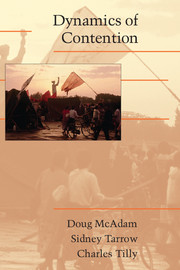Book contents
5 - CONTENTIOUS ACTION
Published online by Cambridge University Press: 05 June 2012
Summary
During the early 1960s, Amitav Ghosh lived in Dhaka, then capital of East Pakistan, where his father served in the Indian diplomatic mission. “There was,” Ghosh remarks,
an element of irony in our living in Dhaka as “foreigners,” for Dhaka was in fact our ancestral city; both my parents were from families that belonged to the middle-class Hindu community that had once flourished there. But long before the Muslim-majority state of Pakistan was created my ancestors had moved westwards, and thanks to their wanderlust we were Indians now, and Dhaka was foreign territory to us although we still spoke its dialect and still had several relatives living in the old Hindu neighbourhoods in the heart of the city.
[Ghosh 1992: 205]For Hindus of India, Pakistan, and Bangladesh, the name Ghosh signals a family history of higher-caste standing. This Ghosh tells of a night in January 1964, when his father ordered their cook to sequester eight-year-old Amitav in their big house's master bedroom. As the fearful cook stole out to a nearby balcony for a look at what was happening below, young Amitav followed him, stared down, and witnessed a scene he recalled almost thirty years later in these terms:
A large crowd is thronging around our house, a mob of hundreds of men, their faces shining red in the light of the burning torches in their hands, rags tied on sticks, whose flames seem to be swirling against our walls in waves of fire. […]
- Type
- Chapter
- Information
- Dynamics of Contention , pp. 124 - 159Publisher: Cambridge University PressPrint publication year: 2001
- 1
- Cited by

